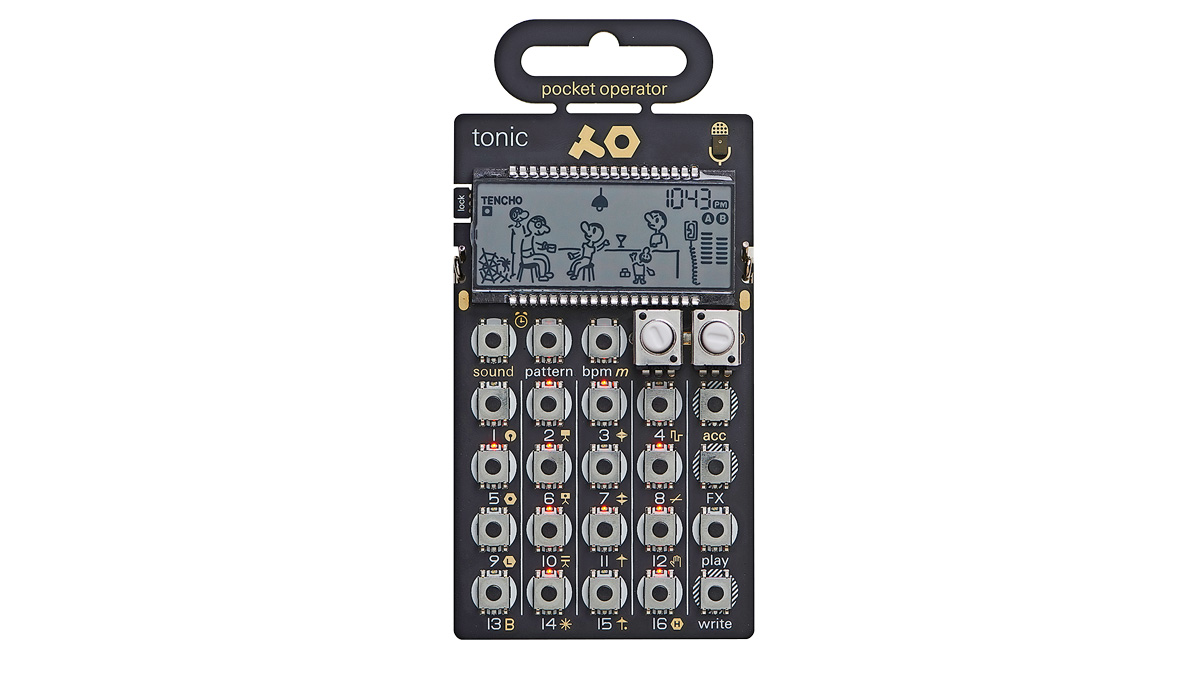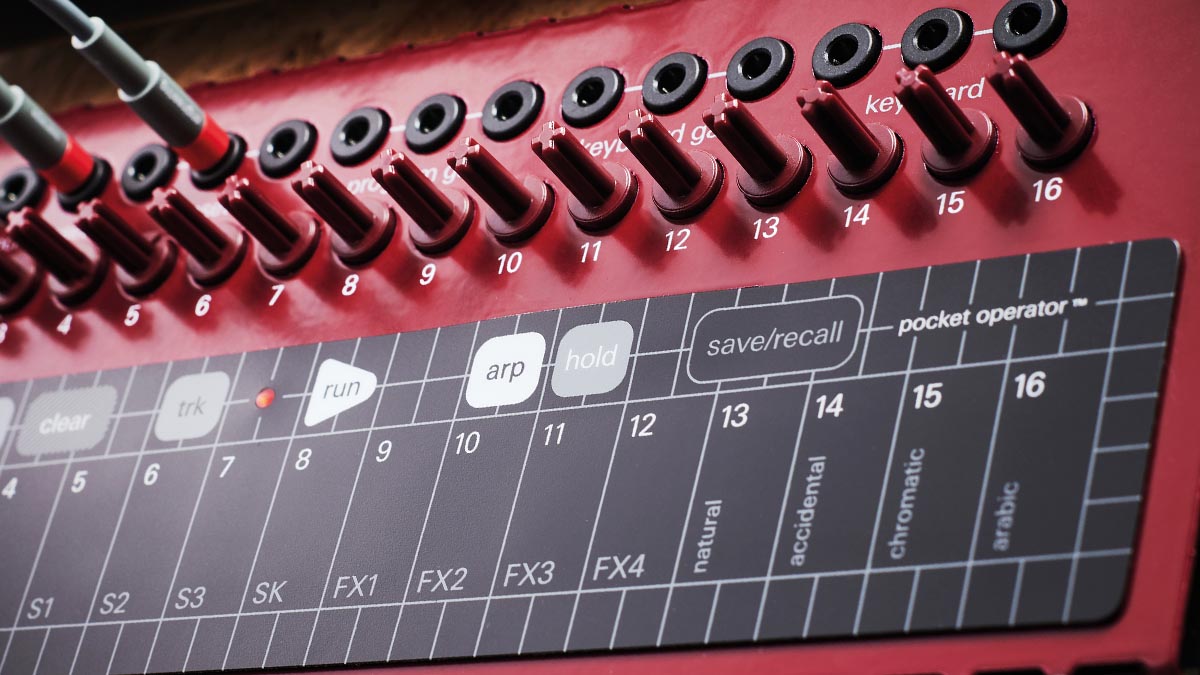MusicRadar Verdict
A powerful, portable sequencer let down slightly by a high price and some iffy design choices.
Pros
- +
Can output CV, MIDI and PO sync.
- +
Portable and battery-powered.
- +
Polyrhythmic sequencing with preset saving.
Cons
- -
Touch keyboard feels awful.
- -
Specialist tool required to change batteries.
- -
Expensive for a DIY kit.
MusicRadar's got your back
What is it?
The smallest entry into Teenage Engineering’s new Pocket Operator Modular range – alongside the POM-170 and POM-400 synth systems – the PO 16 is a battery-powered four-track CV and MIDI sequencer and arpeggiator.
As with its siblings in the range, the PO 16 comes as a self-build kit that needs to be bent, snapped and screwed together. Being the smallest of the range, the 16 has the least parts and involves the least assembly, and while the process is still occasionally fiddly it’s pretty straightforward and ultimately satisfying.
The resulting hardware is lightweight and compact and, thanks to its battery-powered operation, nicely portable.
The PO 16 can output several types of signal – CV and gate via its front panel patch points, stereo analogue sync for other Pocket Operator devices, and MIDI via a 3.5mm jack output. There are four sequencing tracks, each of which can be up to 64 steps in length.
Performance and verdict
Step values are input using the touchstrip keyboard and the 16 corresponding rotaries. Using these rotaries to input precise pitch changes can be a little fiddly, but fortunately the keyboard can be set to one of four scale types (natural, accidental, chromatic, Arabic), making melodic programming much easier.
It’s worth noting that the MIDI output is always locked to one of these scales and ignores any value changes made by the CV rotaries.
Full patterns and individual steps can be transposed via the keyboard, and a shift press allows for solo/mute of each track. Patterns can have their step lengths set individually, and each track can also have its own division of the main tempo, for interesting rhythmic sequencing.
Want all the hottest music and gear news, reviews, deals, features and more, direct to your inbox? Sign up here.
There’s also an arpeggiator available for each track too, with a hold function and a choice of 16 patterns. Finally, the PO 16 features the ability to save and recall up to 16 presets, each storing patterns for all four sequencer tracks.

• Pioneer DJ Toraiz Squid
Pioneer DJ’s new Toraiz Squid sequencer opens the door to a world of bespoke sequencing options, with new features like Groove Bend and speed modulation putting a new spin on your step sequencing moves.
• Akai Professional Force
If you can stomach the price and eschew your existing setup, Force could become the centre of your studio.
• Teenage Engineering Pocket Operators
The Pocket Operators include Rhythm (a drum synthesizer), Sub (a bassline synthesizer) and Factory (a melody synthesizer), with the latter two harnessing synthesis methods ranging from FM and subtractive to wavetable and physical modelling.
In all then, there’s a surprising amount of functionality for such a diminutive device, making the PO 16 the most interesting and useful of Teenage Engineering’s PO Modular units.
Unfortunately, there are a few odd design choices that let the overall experience down. For one thing, the PO 16’s batteries are mounted on the interior of the unit, meaning you’ll need to take the chassis apart completely to replace them.
This isn’t necessarily a huge problem in itself, but since the designs use their own proprietary screws, it makes things awkward if you lose the speciality tool supplied in the box. Fortunately there’s an input for an external power supply, which can be purchased separately from Teenage Engineering.
The touchstrip keyboard is pretty horrible to use too, requiring relatively hard presses to trigger notes but offering no tactile feedback. It’s fi ne for step-inputting sequences, but it’s far from ‘playable’, and makes it far too easy to accidentally trigger notes when changing settings or muting/soloing.
These don’t render the PO 16 unusable by any means, and there’s a good balance of functionality and portability. For something this ‘DIY’ though, the price is a little high, putting it directly head-to-head with Arturia’s considerably more ‘pro’ feeling BeatStep Pro.
MusicRadar verdict: A powerful, portable sequencer let down slightly by a high price and some iffy design choices.
Hands-on demos
Ricky Tinez
True Cuckoo
Specifications
- Type: Four-track CV and MIDI sequencer with arpeggiator and 16 preset slots
- Key features: Outputs CV, gate, MIDI, and PO sync signals to control the POM-400 or other synthesizers.
- Contact: Teenage Engineering
I'm the Managing Editor of Music Technology at MusicRadar and former Editor-in-Chief of Future Music, Computer Music and Electronic Musician. I've been messing around with music tech in various forms for over two decades. I've also spent the last 10 years forgetting how to play guitar. Find me in the chillout room at raves complaining that it's past my bedtime.
